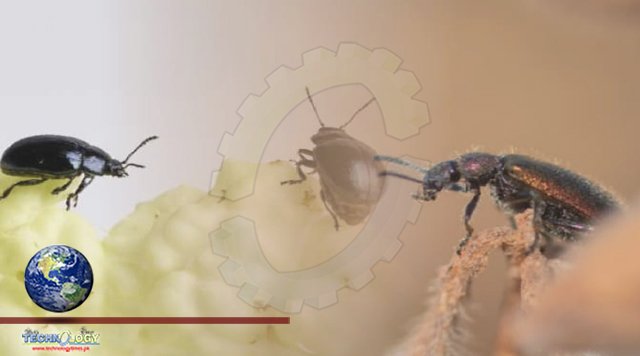A research team at the Max Planck Institute for Chemical Ecology in Jena, Germany, shows in a new study how leaf beetles could successfully use new and previously indigestible food sources in the course of evolution.

The insects acquired enzymes from microorganisms via horizontal gene transfer that enabled them to degrade pectins, solid components of the plant cell wall. Since the degradation products resulting from pectin digestion are not per se crucial for the growth and development of the beetles, the researchers conclude that the beetles disrupt the cell wall to access the protein-rich cytoplasm of plant cells, which they need for their nutrition. Fossil findings of insect feeding damage on plants are evidence that insects have been using plants as a food source for more than 400 million years. Researchers led by Roy Kirsch and Yannick Pauchet from the Department of Insect Symbiosis are investigating how herbivorous insects are able to break down the hard-to-digest components of their plant food in the first place. In earlier work, they had already shown that pectin-degrading enzymes are widespread in herbivorous beetle species. They were also able to demonstrate that these beetle enzymes were invariably of microbial origin. leaf beetles, The question of the current study, now published in Proceedings of the National Academy of Sciences, was therefore how important these enzymes are for the nutrition and fitness of the insect, in this case the mustard leaf beetle Phaedon cochleariae.
“Our goal was to better understand how herbivorous insects deal with the plant cell wall, which makes the bulk of their diet. Pectin is the matrix embedding cellulose and hemicellulose fibers within the plant cell wall, and it is the main constituent of the cell-connecting middle lamellae. Consequently, pectin must be digested first so that cellulase and hemicellulase enzymes can access their substrates and the plant cells are finally freed from their protective cell wall. In this context, the action of pectinases, i.e., pectin-degrading enzymes, are key to efficient digestion of a leaf beetle’s diet,” says first author Roy Kirsch. To study the role of the pectinases, the researchers generated beetle lines in which these enzymes were not present. This initially turned out to be more difficult than expected. “Not even a drastic reduction of pectinase activity through knockdown RNAi experiments in leaf beetle larvae was sufficient to effectively inhibit pectin digestion. We were only able to completely knock-out pectinase-encoding genes in the leaf beetles by applying CRISPR/Cas9 genome editing,” says study leader Yannick Pauchet, underlining the importance of the “genetic scissors,” a technology for which Emmanuelle Charpentier and Jennifer Doudna were awarded the 2020 Nobel Prize in Chemistry.
Source: This news is originally published by phys.org